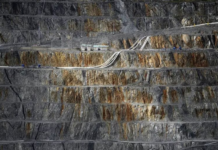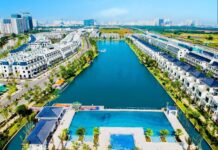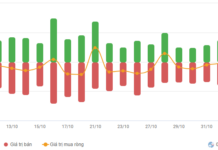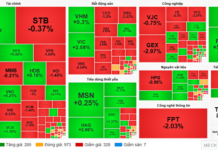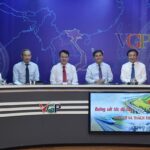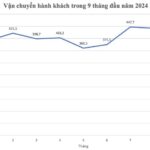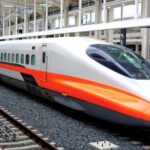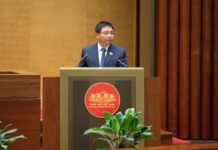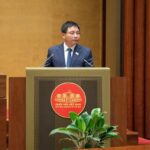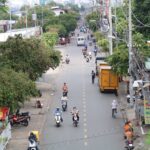On October 29th, the Government’s Portal held a discussion on “High-Speed Rail: Opportunities and Challenges,” with the participation of state management leaders and experts to analyze, discuss, and clarify issues of public interest regarding the proposed high-speed rail investment project on the North-South axis, including: capital sources, speed, and economic and social impacts.

Deputy Minister of Planning and Investment Tran Quoc Phuong – Photo: VGP/Duong Tuan
|
During the discussion, when asked about the impact assessments and considerations of the project, Deputy Minister of Planning and Investment Tran Quoc Phuong shared that this is a reasonable time and a “ripe” stage to construct the North-South high-speed rail, and the technical elements and implementation content are well-prepared.
According to Deputy Minister Phuong, from a socio-economic development perspective, firstly, to assert the construction of the rail line at this time, we have had a sufficient basis for implementation.
Firstly, the aspirations of the people and the determination of the political system have demonstrated our desire for an international-standard high-speed rail line. We already have an old railway line, but this new line will meet higher standards and provide better connectivity than the one we are currently using.
Secondly, we also have a solid political and practical foundation. Politically, we have resolutions and conclusions from the Central Committee and the Politburo on constructing a high-speed rail line by 2035. In terms of practical foundations, the National Master Plan also addresses the need to complete transportation infrastructure, including the North-South high-speed rail line. This is essential to bring about a breakthrough in infrastructure, positively impacting economic growth and ensuring social welfare.
Based on preliminary analysis, we are currently in the pre-feasibility evaluation phase of the project. We have initial data to assess the project’s socio-economic impact, which can be divided into two stages: the construction phase and the operation phase. Both stages will influence economic growth.
As we know, investment spending is also a driver of economic growth. In the history of Vietnam’s public investment, this is the largest-scale project to date, with a total investment of approximately 70 billion USD. This is a pre-feasibility estimate, a substantial figure. This investment level will impact economic growth throughout the project’s construction period. According to preliminary assessments, if this amount is invested between now and 2035, the impact of constructing this high-speed rail will increase GDP by approximately 0.97 percentage points. This is a significant contribution to the overall economic growth.
Delving deeper, this project directly influences seven to eight sectors. Firstly, it affects our construction sector within the GDP structure, as this is an installation project.
Secondly, it impacts auxiliary industries that support this project, such as the industry supplying construction materials, including common materials like sand, gravel, and pebbles, or composite materials like iron and steel for tracks and other structures.
Thirdly, it influences service sectors that cater to this project, such as finance, banking, and capital mobilization services.
Fourthly, it has a positive impact on urban development. This line will establish over 20 stations from North to South. In the development orientation of this rail line, each station is envisioned to have accompanying urban areas. This is also a driver for development. In the future, as we identify urban development as a critical driver, this project will boost socio-economic progress.
Fifthly, it will influence sectors related to the operation of the project, especially the tourism industry.
Sixthly, it creates employment opportunities. Being an enormous project, mobilizing a workforce for its construction will generate a considerable number of jobs.
Additionally, it will impact the growth of the transportation sector, as we aim to modernize our transportation system, increase revenue, productivity, and capacity of the transportation industry with this new railway.
The second phase will influence socio-economic development after the project is put into operation. Once operational, the project will undoubtedly enhance the competitiveness of the economy, particularly by reducing logistics costs, significantly contributing to the development of industries and businesses that utilize this rail line.
This is our preliminary assessment, and we will certainly have more precise figures in the future. We will regularly update and provide more detailed evaluations.
The Finance Ministry’s Vow: High-Speed Rail Project Funds Secured with Meticulous Planning
For the project’s resource allocation, Deputy Minister of Finance Bui Van Khang affirmed that the financial preparations for the high-speed rail project are on track to ensure the highest level of financial resources according to the approved timeline. The implementation of the project remains aligned with the Resolution No.49-NQ/TW of the Politburo and the Resolution of the 10th Plenum of the Party Central Committee.
The Future of Freight: A Positive Outlook for 2024 and Beyond
As of September 2024, both passenger and freight transportation sectors witnessed promising growth. With the projected surge in transportation demand during the upcoming holiday season, achieving the annual transportation target seems well within reach.
Unlocking New Frontiers: The North-South High-Speed Rail Project.
On the afternoon of October 14th, a council meeting was held at the Ministry of Planning and Investment headquarters. The meeting was attended by the State Appraisal Council, who reviewed the pre-feasibility study report for the high-speed North-South railway project. Minister of Planning and Investment Nguyen Chi Dung, as the Chairman, presided over the meeting.
Clarifying the Localization Potential of the High-Speed North-South Railway
“A critical evaluation of the pre-feasibility study report for the high-speed North-South railway project is warranted. The Ministry of Planning and Investment has requested the Ministry of Transport to elucidate the potential for enhanced localization and technological mastery. Furthermore, a comprehensive assessment of the advantages of public investment compared to alternative financing models, especially for sections without a discernible advantage for railway development, is imperative.”



